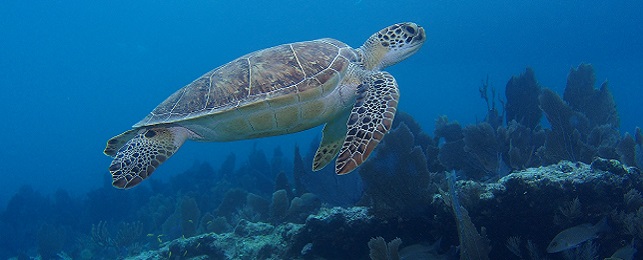
Understanding Sea Turtles
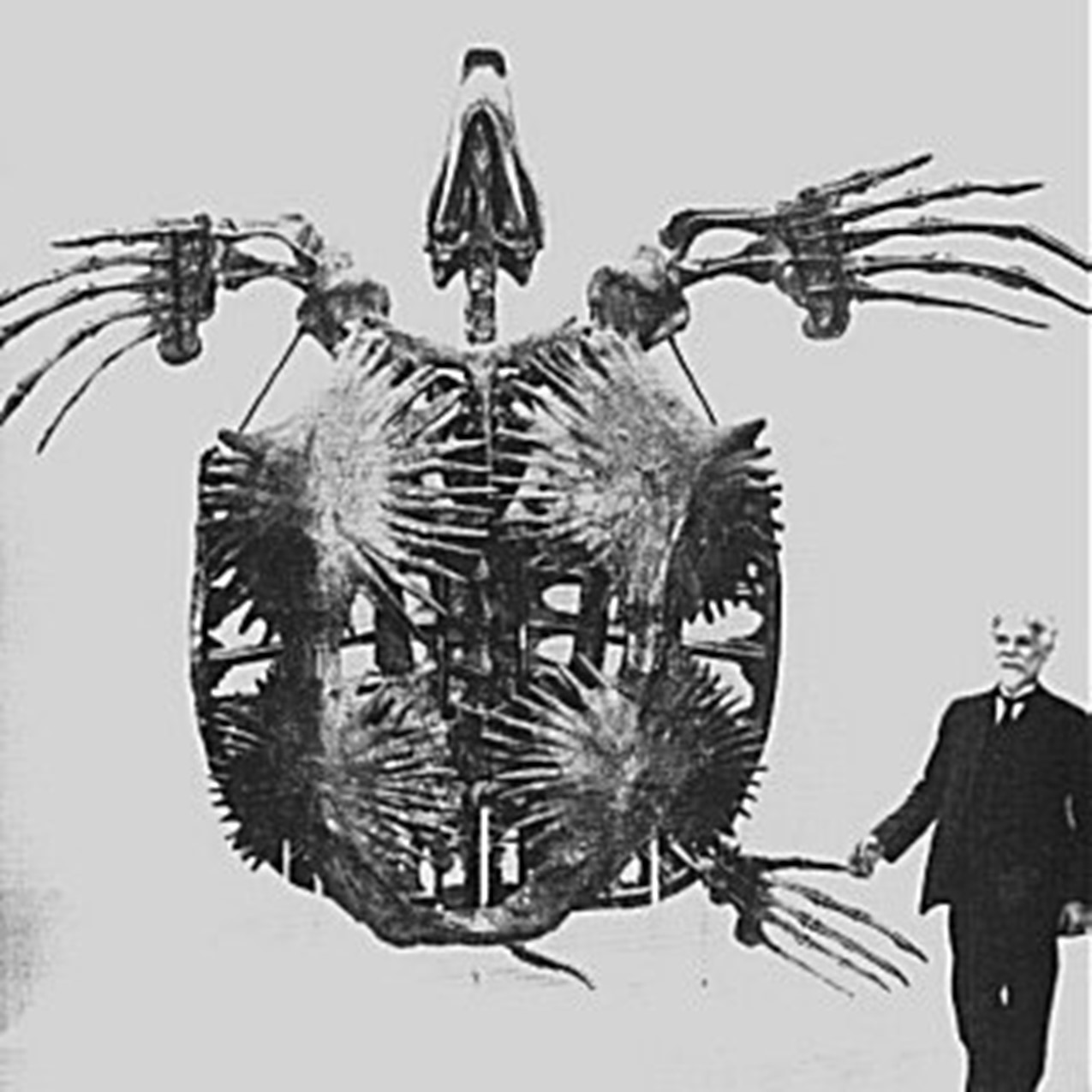
Sea turtles are living relics, with a history that spans an incredible 245 million years, making them older than dinosaurs! Picture Archelon, a giant among ancient sea turtles, swimming during the Cretaceous period. This colossal ancestor was truly immense, measuring up to 13 feet long, with a 16-foot flipper span, and weighing a staggering 5,000 pounds, making modern sea turtles look small in comparison.
Modern Sea Turtles
While today's sea turtles differ significantly from their massive prehistoric relatives, they share enduring similarities in their fundamental adaptations to marine life. Currently, seven species of sea turtles inhabit every ocean worldwide, having survived millennia of environmental change. Tragically, all seven species are now classified as either threatened or endangered, facing unprecedented challenges in the modern era.
Sea Turtles of Broward County
Our Broward County beaches and surrounding waters are vital habitats for several of these magnificent creatures. Three of the seven global species commonly nest here: the Loggerhead (Caretta caretta), Green (Chelonia mydas), and Leatherback (Dermochelys coriacea) sea turtles. Additionally, two other species, the Hawksbill (Eretmochelys imbricata) and Kemp's Ridley (Lepidochelys kempii), are regularly observed offshore.
Life Cycle of a Sea Turtle
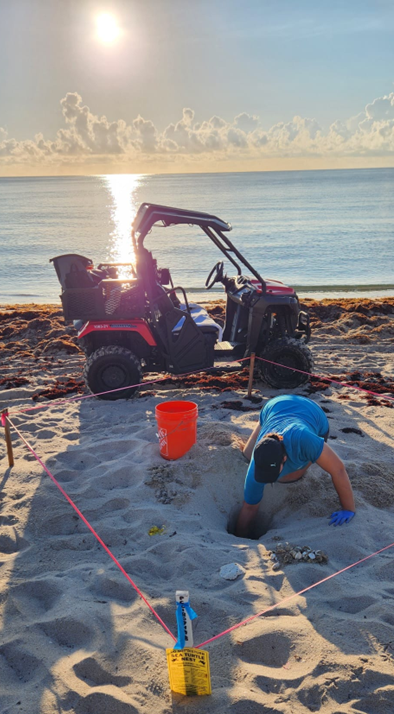
After a female sea turtle lays her clutch, the fascinating process of egg incubation begins within the sandy chamber. Typically, a nest contains anywhere from 80 to 120 eggs, though this number can vary depending on the species.
Unique Egg Characteristics
Unlike chicken eggs, sea turtle eggs are spherical, like ping-pong balls, with soft, leathery shells. This soft shell allows them to withstand drops into the 2-6 foot deep egg chamber without breaking. Their porous shells also allow essential gases and water to pass through, vital for embryo development.
Incubation Facts
- Duration: Eggs incubate for about two months.
- Temperature Dependent Sex Determination: "Hot chicks, cool dudes" means warmer nest temperatures yield more females; cooler temperatures yield more males.
- Influencing Factors: Incubation time is affected by temperature, rain, dryness, sand grain size, and chamber depth.
Hatching
After roughly two months, hatchlings emerge from their shells under darkness. They collectively climb through the coarse, damp, sand to the surface, often described as "bubbles of water boiling over in a pot."
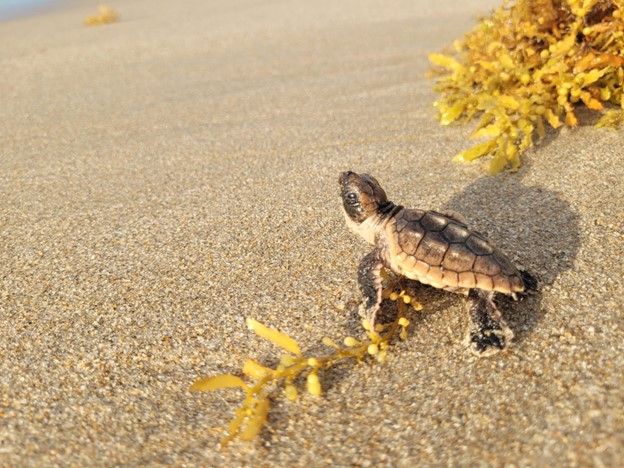
After emerging from the nest, hatchlings instinctively crawl towards the brightest horizon. Naturally, this is the reflection of the night sky, moon, and stars on the ocean. However, in developed coastal areas, artificial lighting from homes and businesses can become the brightest horizon, causing hatchlings (and adults) to become disoriented and crawl inland instead of towards the sea.
Protecting Disoriented Hatchlings
In areas with significant coastal lighting and high disorientation rates, we install restraining cages over nests. These cages are monitored daily; their seaward door is opened at dawn and closed at dusk. Throughout the night, staff check for emerged hatchlings, safely containing them from artificial lights that could lead them to streets, storm drains, or other dangers. Our authorized personnel then collect these hatchlings for a controlled release into the ocean.
If you find disoriented hatchlings in Broward County (on roads, away from the sea, or in a cage), please call the Sea Turtle Emergency line: (954) 328-0580.
Hatchling Facts
- Weight: Hatchlings weigh between ½ an ounce to 1 ½ ounces upon hatching (e.g., loggerhead and leatherback, respectively).
- Survival Rate: Only 1 out of 1,000 hatchlings typically survive to adulthood.
- Light Sensitivity: Hatchlings are more sensitive to artificial lighting than adult sea turtles.
"The Lost Years"
Once in the water, hatchlings swim continuously for 24-48 hours, until they reach the Gulf Stream (in areas like Broward County). They then spend several years in the open ocean, a period historically known as "The Lost Years," using floating seaweed mats (like sargassum in the Sargasso Sea) for shelter and food.

As sea turtles grow past the hatchling stage, they become juveniles – essentially adolescents on their way to maturity.
Juvenile Facts
- Diet: Typically omnivores, eating both plants (like seagrass) and animals (like crustaceans).
- Gender: Cannot be determined visually.
- Habitat: Often associate with floating sargassum seaweed trapped within the North Atlantic Gyre.
Exploring New Habitats
During this life stage, juvenile sea turtles begin to explore diverse near-shore habitats. In the North Atlantic, this includes areas such as the Azores (off Portugal), Central Florida's Indian River Lagoon, and even the coastal waters of Broward County.
Photo Credit: Lisa Miceli
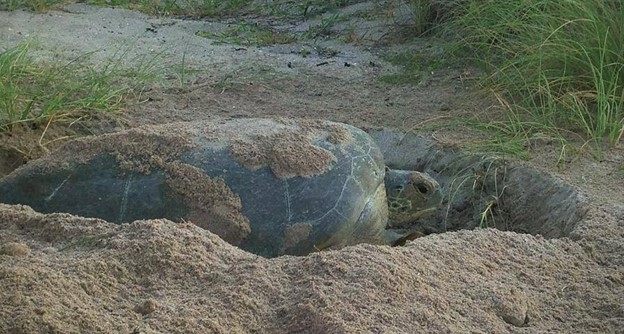
Upon reaching maturity, adult sea turtles often specialize their diets. For instance, Green Sea Turtles transition from omnivores to almost exclusively herbivores, feeding on seagrass.
Nesting females return to beaches within 5-20 miles of where they hatched, navigating using Earth's magnetic field. Once there, females typically lay 2-7 nests per season, but they do not nest every single year.
Adult Facts
- Navigation: Use Earth's magnetic field to navigate the oceans..
- Nesting Cycle: Females typically nest every 2-3 years.
- Maturity: Like humans, they take many years to mature, depending on the species.
Foraging and Habitat
With their specialized diets, adults tend to settle in suitable foraging grounds, where they are thought to spend most of their remaining lives.
Migration and Breeding
During nesting season, adult sea turtles undertake remarkable migrations, traveling hundreds to thousands of miles from their feeding grounds to specific breeding areas to mate and lay eggs.
- Parental Care: The mother does not stay with the nest and will not encounter her hatchlings.
- Sperm Storage: Females can store sperm from multiple males.
- Mating Frequency: Males typically mate annually, while females may not mate every year.
Photo Credit: Queensland Department of Environment and Science
Sea Turtle Diet
Each sea turtle species plays a unique role in marine ecosystems, largely defined by its specialized diet. While some species are omnivores (eating both plants and animals), others are strict carnivores (eating only animals) or even herbivores (eating only plants). This specialization often develops as they mature.
As hatchlings, many species are opportunistic omnivores, consuming nearly anything that fits into their mouths. However, as they grow into adults, their diets become more refined, leading to specific "delicacies" and the evolution of specialized jaw structures unique to each species.Contact Us
E-mail: seaturtles@nova.edu
Phone: (954) 262-3672
Sea Turtle Emergency Response Line
If you see a dead, sick, or injured sea turtle or hatchling(s) in Broward County, call (954) 328-0580
For over 30 years, NSU has been contracted by Broward County to implement and manage the Broward County Sea Turtle Conservation Program, which monitors sea turtle nesting activity on over 24 miles of Broward County beaches.
